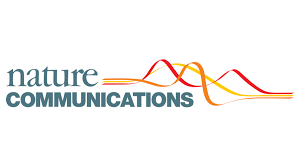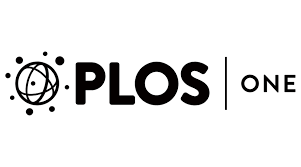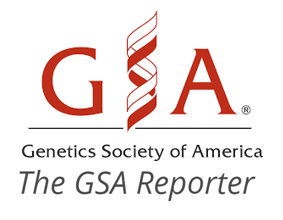Academic publications
![]() Kaplan F (Co-Corresponding author), D. Shapiro-Ilan, KC Schiller. (2020) Dynamics of entomopathogenic nematode foraging and infectivity in microgravity. npj Microgravity 6
Kaplan F (Co-Corresponding author), D. Shapiro-Ilan, KC Schiller. (2020) Dynamics of entomopathogenic nematode foraging and infectivity in microgravity. npj Microgravity 6
 Kaplan F (Corresponding author), A Perret-Gentil, J Giurintano, G Stevens, H Erdogan, K Schiller, A Mirti, E Sampson, C Torres, J Sun, E Lewis, D & Shapiro-Ilan. (2020) Conspecific and heterospecific pheromones stimulate dispersal of entomopathogenic nematodes during quiescence. Scientific Reports 10,5738
Kaplan F (Corresponding author), A Perret-Gentil, J Giurintano, G Stevens, H Erdogan, K Schiller, A Mirti, E Sampson, C Torres, J Sun, E Lewis, D & Shapiro-Ilan. (2020) Conspecific and heterospecific pheromones stimulate dispersal of entomopathogenic nematodes during quiescence. Scientific Reports 10,5738
![]() Oliveira-Hofman C, Kaplan F, Stevens G, et al. (2019) Pheromones act as boosters for entomopathogenic nematodes efficacy. J Invertebr. Pathol. 164:38-42
Oliveira-Hofman C, Kaplan F, Stevens G, et al. (2019) Pheromones act as boosters for entomopathogenic nematodes efficacy. J Invertebr. Pathol. 164:38-42
![]() Shapiro-Ilan D, Kaplan F, Oliveira-Hofman C, et al. (2019) Conspecific pheromones enhance entomopathogenic infectivity. J Nematology 51: 1-5
Shapiro-Ilan D, Kaplan F, Oliveira-Hofman C, et al. (2019) Conspecific pheromones enhance entomopathogenic infectivity. J Nematology 51: 1-5
![]() Wu S, Kaplan F, Lewis EE, et al. (2019) Infected host macerate enhances entomopathogenic nematode movement towards hosts and infectivity in a soil profile. J Invertebr. Pathol. 159: 141-144
Wu S, Kaplan F, Lewis EE, et al. (2019) Infected host macerate enhances entomopathogenic nematode movement towards hosts and infectivity in a soil profile. J Invertebr. Pathol. 159: 141-144
![]() Ruan W, Shapiro-Ilan DI, Kaplan F, Lewis EE, et al. (2018) Movement patterns in entomopathogenic nematodes: continuous vs. temporal. J Invertebr. Pathol. 151, 137-143.
Ruan W, Shapiro-Ilan DI, Kaplan F, Lewis EE, et al. (2018) Movement patterns in entomopathogenic nematodes: continuous vs. temporal. J Invertebr. Pathol. 151, 137-143.
 Manosalva P, Manohar M, von Reuss SH, Chen S, Koch A, Kaplan F, et al. (2015) Conserved nematode signaling molecules elicit plant defenses and pathogen resistance. Nature Communications 6, 7795
Manosalva P, Manohar M, von Reuss SH, Chen S, Koch A, Kaplan F, et al. (2015) Conserved nematode signaling molecules elicit plant defenses and pathogen resistance. Nature Communications 6, 7795
 Kaplan F (Corresponding author), Alborn H, von Reuss SH, et al. (2012) Interspecific nematode signals regulate dispersal behavior. PloS ONE 7 (6), e38735
Kaplan F (Corresponding author), Alborn H, von Reuss SH, et al. (2012) Interspecific nematode signals regulate dispersal behavior. PloS ONE 7 (6), e38735
![]() Choe A, Chuman T, von Reuss SH, Dossey AT, Yim J, Ajredini R, Kolawa AA, Kaplan F, et al. (2012) Gender-specific mating pheromones in the nematode Panagrellus redivivus. Proc. Nat. Acad. Sci. 109: 20949 – 20954.
Choe A, Chuman T, von Reuss SH, Dossey AT, Yim J, Ajredini R, Kolawa AA, Kaplan F, et al. (2012) Gender-specific mating pheromones in the nematode Panagrellus redivivus. Proc. Nat. Acad. Sci. 109: 20949 – 20954.
 Kaplan F, Srinivasan J, Mahanti P, et al. (2011) Ascaroside expression in Caenorhabditis elegans is strongly dependent on diet and developmental stage. PLoS ONE 6: e17804.
Kaplan F, Srinivasan J, Mahanti P, et al. (2011) Ascaroside expression in Caenorhabditis elegans is strongly dependent on diet and developmental stage. PLoS ONE 6: e17804.
![]() Kaplan F, Badri DV, Zachariah C, et al. (2009) Bacterial attraction and quorum sensing inhibition in Caenorhabditis elegans exudates. J. Chem. Ecol. 35: 878 – 892.
Kaplan F, Badri DV, Zachariah C, et al. (2009) Bacterial attraction and quorum sensing inhibition in Caenorhabditis elegans exudates. J. Chem. Ecol. 35: 878 – 892.
Kaplan F (Co-first, Project leader), Srinivasan J, Ajredini R, et al. (2008) A blend of small molecules regulates both mating and development in Caenorhabditis elegans. Nature 454: 1115-1118
For a complete list of Dr. Kaplan’s publications, please visit her Google Scholar Profile.
General audience articles
![]() Shapiro Ilan DI, Hofman CO, Kaplan F (2020) Specialized Pheromones Can Boost the Ability of Beneficial Nematodes to Control Pecan Weevil and Other Pests. Pecan Grower. 23(5): 25-33.
Shapiro Ilan DI, Hofman CO, Kaplan F (2020) Specialized Pheromones Can Boost the Ability of Beneficial Nematodes to Control Pecan Weevil and Other Pests. Pecan Grower. 23(5): 25-33.
![]() Schiller KC and Kaplan F (2020) Uncovering Pheronym’s value proposition during NSF I-Corps Teams. Medium
Schiller KC and Kaplan F (2020) Uncovering Pheronym’s value proposition during NSF I-Corps Teams. Medium
![]() Kaplan F and Schiller KC (2020) Identifying the beachhead market at the NSF I-Corps Teams. Medium.
Kaplan F and Schiller KC (2020) Identifying the beachhead market at the NSF I-Corps Teams. Medium.
![]() Kaplan F and Schiller KC (2020) Pheronym’s amazing 6 week-journey at the NSF I-Corps teams program. Medium.
Kaplan F and Schiller KC (2020) Pheronym’s amazing 6 week-journey at the NSF I-Corps teams program. Medium.
 Kaplan F (2018) Composite biopesticides: exponentially better results for effective, safe and eco-friendly pest control. Medium. It is also featured in the Global Crop Protection Market, Forecast to 2023 by Frost & Sullivan, K33E-88, May 2019
Kaplan F (2018) Composite biopesticides: exponentially better results for effective, safe and eco-friendly pest control. Medium. It is also featured in the Global Crop Protection Market, Forecast to 2023 by Frost & Sullivan, K33E-88, May 2019
![]() Kaplan F (2017) Why eco-friendly solutions? Medium.
Kaplan F (2017) Why eco-friendly solutions? Medium.
![]() Kaplan F (2017) New Wave Pheromones. Medium.
Kaplan F (2017) New Wave Pheromones. Medium.
 Kaplan F (2014) Caenorhabditis elegans opens the gates to the nematode pheromone world. (Award-winning 5-year vision) The GSA Reporter 11, 8-9
Kaplan F (2014) Caenorhabditis elegans opens the gates to the nematode pheromone world. (Award-winning 5-year vision) The GSA Reporter 11, 8-9

